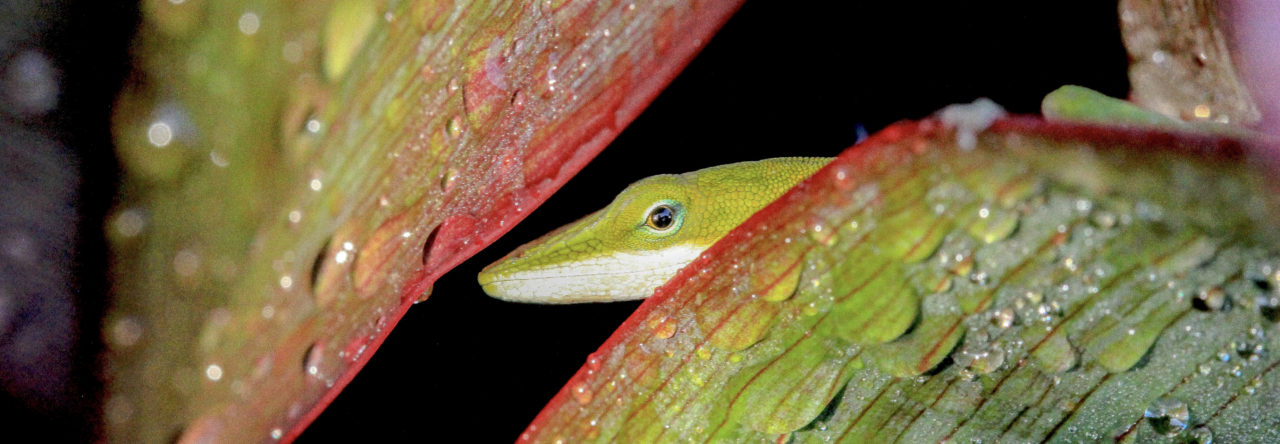
Albino A. capito from http://www.wildherps.com/images/herps/standard/10081124PD.jpg
A very rare picture of an albino anole. I searched on a lot of websites, but found no information. I suppose that albinos are quickly eaten. Unlike nocturnal reptiles for which light color is not an important problem, for anoles that are heliophilic, the light color must be a problem.
In general, albino specimens have a relatively short life expectancy (the photo shows a just hatched individual)–either they are eaten because they are too much visible by the predators, or they couldn’t eat because they are too visible by the prey. The percentage of albinos relative to normal specimens is one case per 100,000, although this probably varies by species.
Back to anoles, unlike nocturnal reptiles for which light color is not an important problem, for our anoles which use a lot the light (for thermoregulation, to show off their bright colors, so that their dominance displays can be seen), being albino may be a huge problem.
One option might be to copy what is done when keeping albino alligators in zoos. Some of these zoos keep these crocodilians in total darkness! But anoles can’t see very well in the dark. The keeping of albino anoles does not really seem possible.
If anybody has an article, I’m interested.















